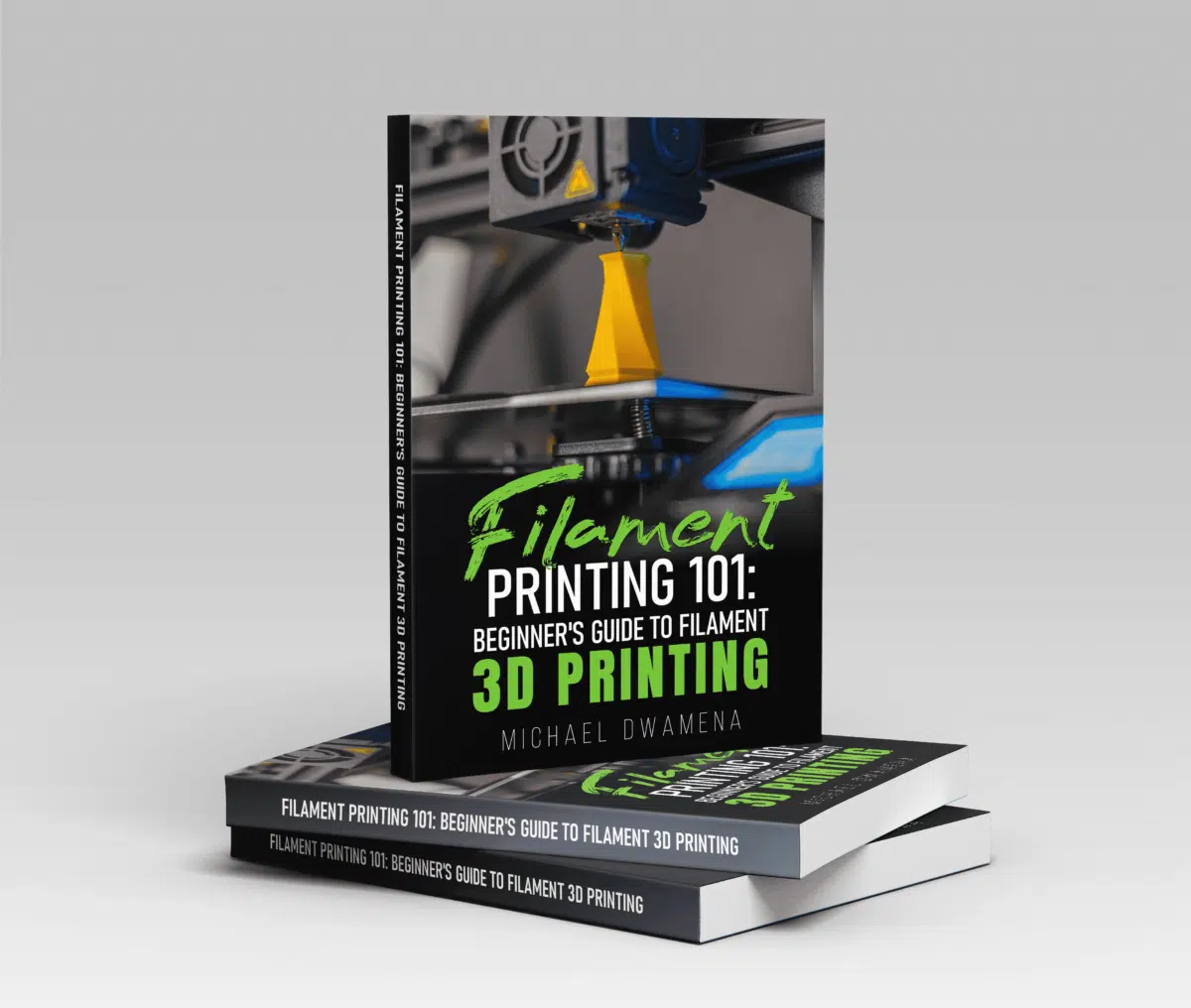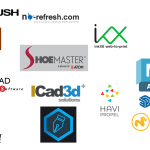As far as hobbies go, 3D printing isn’t one of the cheapest.
Besides the costs of buying a printer and materials, power consumption is a high expense to account for.
The average 3D printer electricity usage varies between 150 and 270 watts per hour for consumer-grade machines. Commercial 3D printers can consume up to 3,000 or more watts per hour. For the average 3D printing project, the printer can consume between 1.8 and 36 kilowatts.
3D Printer Power Consumption Factors
One of the most important things to consider before investing in a 3D printer is its power usage.
Even though a 3D printer consumes far less than most household appliances, the amount of time needed to print an object can have an impact on your electricity bill.
The table below compares the average electricity usage of 3D printers to household appliances*:
| Machine/Appliance | Average Electricity Usage |
|---|---|
| Small 3D printer (e.g. Prusa Mini) | 0.100 kWh |
| Mid-size 3D printer (e.g. Creality Ender 3 V2) | 0.125 kWh |
| Large 3D printer (e.g. Snapmaker 2.0 A350) | 0.220 kWh |
| Industrial 3D printer (e.g. CreatBot F1000) | 4.00 kWh |
| Refrigerator/freezer (old) | 150 kW/month |
| Refrigerator/freezer (new) | 35 kW/month |
| Oven | 2.30 kWh |
| LED TV (55”) | 0.120 kWh |
| Space heater | 1.5 kWh |
| Heat pump (1.5 ton) | 2.93 kWh |
| Heat pump (5.0 ton) | 9.77 kWh |
| AC system (18k BTU) | 1.8 kWh |
| Laptop | 0.050 kWh |
| Desktop computer | 0.060 kWh |
| Washing machine | 6.3 kWh |
| Vacuum cleaner | 0.750 kWh |
| Hair dryer | 1.5 kWh |
*Average electricity usage was calculated based on data from various manufacturers for various 3D printer types and general appliance energy use charts released by energy providers. Actual usage can vary depending on factors such as brand and specs for each individual apparatus.
As the table above shows, a 3D printer can use anywhere between 100 and 4,000 watts per hour. However, power usage depends on a variety of factors.
Vital Components
Like any machine, a 3D printer contains various components that consume electricity whenever the unit is turned on. This is the minimum energy usage required to run the printer’s vital components, such as the motherboard and control panel.
- Our new Filament Printing 101 Course is just for you! Lean how to create perfect professional prints without all the hassle.
- Don't let common mistakes hold you back, click the link to learn more and get ahead now!
When sitting idle, most consumer 3D printers require an average of 10 watts per hour. That’s less than your laptop or desktop computer consumes when turned on.
If the printer is idle, but the motor is engaged, such as after homing, the power consumption goes up to an average of 30 watts per hour.
Hot End Temperature
All 3D printers use a hot end to melt and extrude the filament. Depending on the filament type, you have to heat the nozzle to a lower or higher temperature.
The average 3D printer consumes between 250 and 300 watts per hour during preheating. Electricity usage drops slightly once the temperature is reached, but the printer will have to maintain it throughout the printing process.
How much the printer consumes depends on the temperature set. The machine needs less energy to reach and maintain a lower temperature compared to a higher one.
Build Plate Temperature
Another heated component of a 3D printer is the build plate. The main difference between the plate and the nozzle is that not all materials require a heated bed.
Most 3D printer beds have a temperature range from 45°C to 110°C, although there are exceptions.
Similar to the hot end, the printer has to maintain the bed hot throughout the printing process, and it can consume anywhere between 50 to 150 watts per hour to do so.
It goes without saying that it won’t use electricity for this purpose if you’re printing on an unheated plate.
Print Time
Even though the printer needs the same amount of energy to run its vital functions, heat the nozzle and bed, and move the arm while printing, regardless of the project’s length, the print time impacts total costs per project.
Running the printer for 10 minutes to build a small piece requires a lot less energy than running the machine for hours on end when printing large projects.
However, if you have to print multiple small pieces, keeping the printer running until you’ve done the whole batch can help you save.
That’s because the 3D printer will consume more electricity to heat up the nozzle and bed from room temperature compared to keeping them hot once the temperature is reached.
You’ll also have to run a homing each time you turn the printer off and then back on, which requires extra energy.
Printer Type & Size
Nowadays, 3D printers come in all shapes and sizes.
Consumer 3D printers designed for home use require about 210 watts per hour on average. Considering the current energy prices, the printer would cost you around 3.5 cents per hour ($0.03423 per hour, to be more precise).
However, a commercial 3D printer can easily eat up 3,000 watts per hour. Running it would cost almost 50 cents per hour, and that’s on a residential electricity plan.
Considering that an average project requires between seven and 20 hours of continuous printing – during which time the machine must maintain the hot end and build plate at temperature – printing a single object could cost anywhere between $0.24 and $10 in electricity alone.
If you’re a hobbyist that only prints an object now and then, your 3D printer’s power usage can be considered negligible.
However, a business using the 3D printer continuously for 25 days per month could shell out $300 or more to cover the printer’s electricity costs.
Tips to Save 3D Printing Electricity Cost
Even though 3D printers aren’t the most electricity-avid machines, they are still terrible at power efficiency.
Try these tips to lower your bill if you haven’t done so already.
Cut-Off Printing Time
The quickest you can print an object, the less energy your printer will consume. An easy way to reduce printing time is by optimizing the printer’s settings.
If you’re using a lightweight type of filament and aren’t too concerned about elephant foot, print the model directly without using rafts.
Choose an infill pattern that is fast to print, such as concentric or grid.
Unless it is a functional object that requires 100% infill, choose a low infill density. For most hobby projects, 20% to 25% infill should suffice, but you could drop to even 5% density for toys or display models.
Printing in thicker layers and thinner walls (hence, using a lower resolution) can also help cut off printing time.
For instance, printing a hollow vase with a size of 3.5 x 3.5 x 5 inches can take 235 minutes in a high resolution (0.10mm layer height) but only 41 minutes to print in a low resolution (0.75mm layer height).
Reduce Heat Loss
The room temperature will always be lower than the temperature of the hot end or build plate, regardless of where your printer is located.
Hence, there’ll be an inevitable loss of temperature.
Cutting it off completely is not possible, but you can reduce it by keeping the printer in a smaller room. Close the door when printing to reduce heat loss.
Alternatively, you could build an enclosure and keep the machine in it.
Set Lower Printing Temperatures
You might have noticed when choosing filament that all brands tell you which temperature range is required to melt and extrude the material.
That range is given because a difference in color and even slight differences between batches may require a slightly different temperature, even if the material is essentially the same.
That said, setting the lowest extrusion temperature can help you save electricity.
Print In Batches
As explained, a printer tends to consume more energy right after starting it up compared to printing from idle.
For this reason, printing in batches can help you reduce costs. This is true when you have to print several copies of the same model or different models altogether.
In the latter case, however, expect the printer to consume more as it adjusts the settings from one file to the other.
Use Alternative Energy Sources
Consuming electricity on the grid can have a huge impact on your energy bill, especially if you print often or want to launch a 3D printing business.
A way to cut off costs is by using renewable or alternative energy sources.
If you can’t install solar panels, you could use a solar power generator. Gas or propane generators could also power your printer – just make sure they use inverter technology to prevent damaging your machine.
Switch To An Energy-Efficient Machine
Ultimately, one of the easiest ways to save energy is by investing in an energy-efficient 3D printer.
If you’re using a full-size machine but only want to print miniatures or other small parts, switching to a mini 3D printer could be wise.
Buying a new 3D printer could also help save costs in the long run.
Most Energy-Effective 3D Printers
Buying an energy-efficient 3D printer can help you save energy, but which to buy? The printers below are some of the most energy-efficient.
The table compares the energy requirements of various 3D printers*:
| 3D Printer | Average Energy Usage |
|---|---|
| Creality Ender 3 Max | 253 W/h |
| Prusa Mini+ | 100 W/h |
| Ultimaker Original | 208 W/h |
| Makerbot Replicator 2X – 1 | 830 W/h |
| CreatBot F1000 | 4,000 W/h |
*Average electricity consumption was calculated according to actual consumption for various types of projects printed in different circumstances and is intended to use as a reference only. Actual usage may differ.
Creality Ender 3 Max – 0.0253 kWh
One of the most popular machines, the Creality Ender 3 Max, sometimes referred to as Maximum Three, has an average consumption of 253 watts per hour when printing at 200°C on a bed heated at 60°C.
Prusa Mini+ – 0.0100 kWh
According to the manufacturer, the average power consumption of most Prusa 3D printers varies from 80 watts per hour when printing PLA to 120 watts per hour for ABS. These measurements were taken in a controlled environment with a room temperature of 26°C.
According to Mini+ users, this printer model has an average power consumption of 100 watts per hour.
Ultimaker Original – 0.0208 kWh
Ideal for avid hobbyists or startups, the Ultimaker Original is a mid-range printer, but it has an energy consumption similar to the Ender 3 Max – around 208 watts per hour on average.
Makerbot Replicator 2X – 1 – 0.0830 kWh
The Replicator from Marketbot is a desktop 3D printer, but a professional one at that. Despite its size, it has a steep price range justified by its performance.
Performance comes with a thirst for electricity, though. This printer consumes around 830 watts per hour, on average.
CreatBot F1000 – 4 kWh
It doesn’t come as a surprise that a large, industrial 3D printer eats up lots of watts.
If you have a business or want to invest in a top-notch machine like the CreatBot F1000, expect to consume around 4 kilowatts per hour when it’s running.
Conclusion
At first glance, the energy consumption of a consumer 3D printer doesn’t seem high. However, the watts can easily add up if you plan to use the printer constantly.
The average 3D printer can consume between 150 and 270 watts per hour. This could work out to about 90 to 162 kilowatts per month or $14.68 to $26.34 per month to run the printer.



